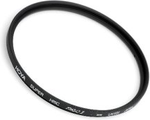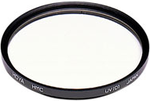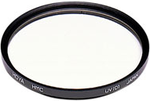Canon Regular Filter 72

-
Hoya Circular Polarizer Review
A short review of the Hoya Circular Polarizing filter (67mm) and example of how it reduces reflection and improves colour and contrast.
-
Fader ND Mark II Variable Neutral Density Filter Video Test
www.chadsorianophotoblog.com A 1080p video shot with a Canon EOS 1D Mark IV and a Canon EOS 60D at 29.97fps. Edited with iMovie'09 and used Quicktime at best quality to compress a 300mb H264 video file. The Canon EOS 1D Mark IV was paired with the Canon EF 24-70mm f/2.8L lens. The Canon EOS 60D was paired with the Canon EF-S 17-55mm f/2.8 IS lens. A 77mm Fader ND Mark II Variable Neutral Density Filter by Fader was attached to the Canon EF 24-70mm f/2.8L lens for this video test and review. See a more detailed review on the link above. www.chadsorianophotoblog.com
-
Canon XL2 - HOYA PRO1 Circular Polarizer TEST
Quick, random and unedited test of HOYA PRO1 Circular Polarizer on Canon XL2 camcorder.
-
Lessons Learned From Fukushima Dai-ichi (2. BWR & Interim Report. 2011. 10. 28)
Click 'cc' button on the menu bar for English subtitle. 英語字幕は、上記メニューバーの「CC」ボタンから表示できます。
-
Polaroid Fader ND vs Light Craft workshop Fader ND Mark II - DSLR FILM NOOB
www.dslrfilmnoob.com Fader ND filters are very handy when shooting in direct sunlight. The prices for fader ND filters also cover a wide range from this polaroid filter ($40) on the low end to the Singh-Ray ($350) filters on the higher end. The Light Craft workshop used in this video falls somewhere in the middle, at a price of $125 it is considered by many to be a very good mid range ND filter. But is it really worth it to spend an extra $85 on the Light Craft filter? Or will you be just as happy using a cheaper Fader ND filter? Watch the clips and decide for your self. The difference wasn't nearly as dramatic as I would have expected in video mode. If you're a professional with professional budget you'll probably still want to spend the money and get the best, but if you're on a tight budget, I could see many people being very happy with the performance that the lower end Polaroid filter has to offer. You can pick up the polaroid Fader ND for around $40 depending on your filter size: www.amazon.com And the LightCraft Fader ND for around $80 to $125 depending on your filter size: www.amazon.com The song playing in the back ground is written and recorded by me and is called "the Blob". If you're not a fan of the music just use the mute button. If you do like the song, you can download it from the DSLRFILMNOOB.com website. Equipment used in this video: Canon T2i Canon 7d Canon 35mm f1.4 lens Canon 50mm f1.2 lens Polaroid Fader ND filter Light Craft workshop fader ND mark <b>...</b>
-
World of Tanks. Complete Guide to T-50-2
Wargaming TV continues to cooperate with experienced players and strongest clans. It's always interesting to work with users, who know our game well and have something yo tell about it. This guide is made thanks to active input from 'CHESS' clan, experienced Clan Wars fighters and usual participants of eSports tournaments. We will talk about T-50-2 light Tank, look to its' characteristics in details and tell about tactic actions while using it on the battlefield. This extensive and detailed guide, which will be updated after release of 8.0 update (because with physics release new gameplay specifics on this scout will appear) And we are ready to help all, who wants to cooperate with us and create new videos. Write about your ideas and submit concepts to our special mail address - [email protected]
-
Old super 8 footage 1960s
Super 8 mm film (often simply called Super 8) is a motion picture film format released in 1960 by Eastman Kodak as an improvement of the older "Double" or "Regular" 8 mm home movie format. The film is nominally 8 mm wide, exactly the same as the older standard 8 mm film, and also has perforations on only one side. However, the dimensions of the perforations are smaller than those on older 8 mm film, which allowed the exposed area to be made larger. The Super 8 standard also specifically allocates the rebate opposite the perforations for an oxide stripe upon which sound can be magnetically recorded. Unlike other "super" gauges such as Super 16 and Super 35, the film stock used for Super 8 is not compatible with standard 8mm film cameras. There are several different varieties of the film system used for shooting, but the final film in each case has the same dimensions. By far the most popular system was the Kodak system. Launched in 1960, Super 8 film comes in plastic light-proof cartridges containing coaxial supply and take-up spools loaded with 50 feet (15 m) of film, with 72 frames per foot. This was enough film for 2.5 minutes at the professional motion picture standard of 24 frames per second, and for 3 minutes and 20 seconds of continuous filming at 18 frames per second (upgraded from Standard 8 mm's 16 frame/s) for amateur use, for a total of approximately 3600 frames per film cartridge. A 200-foot (61 m) cartridge later became available which could be used in <b>...</b>














